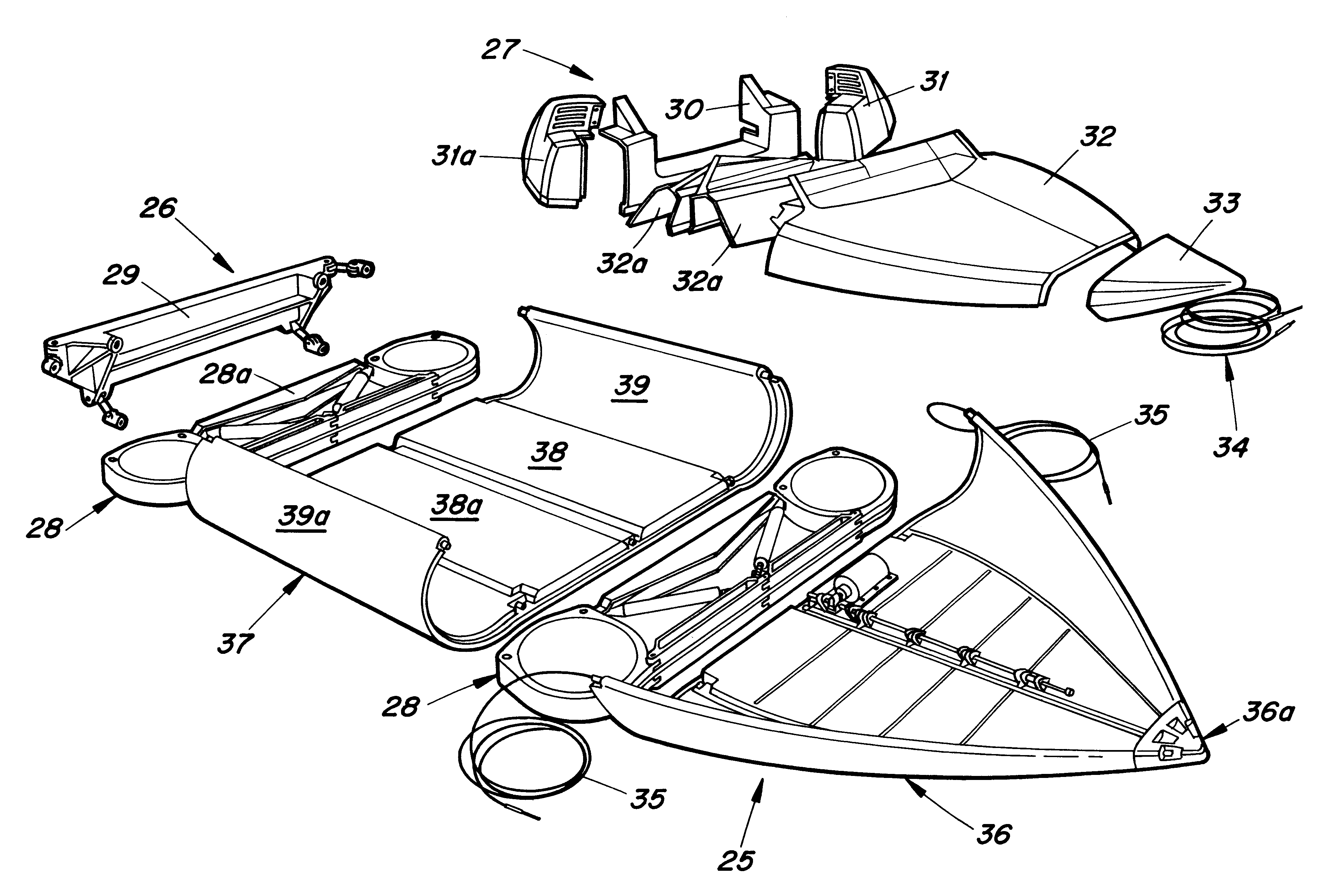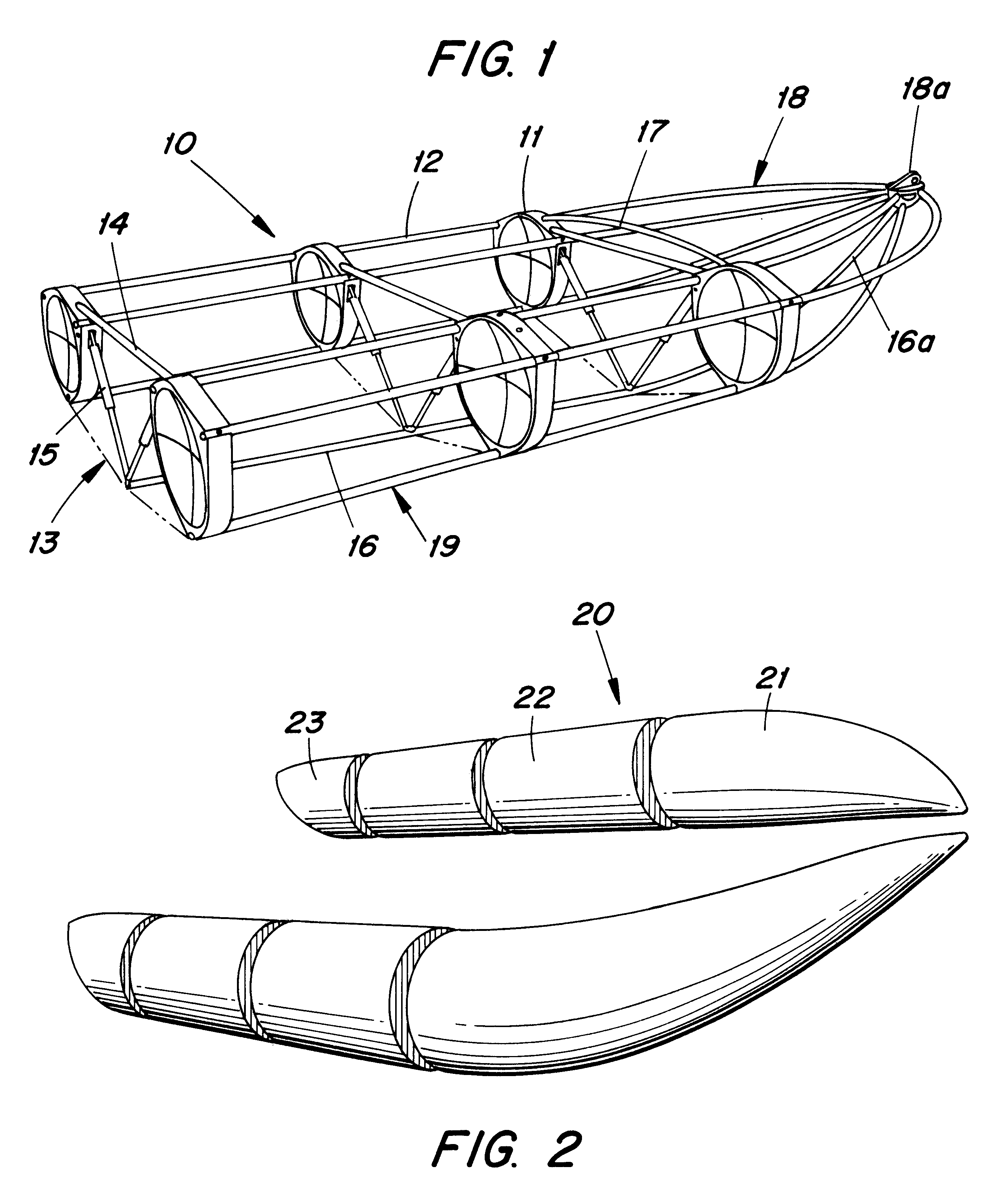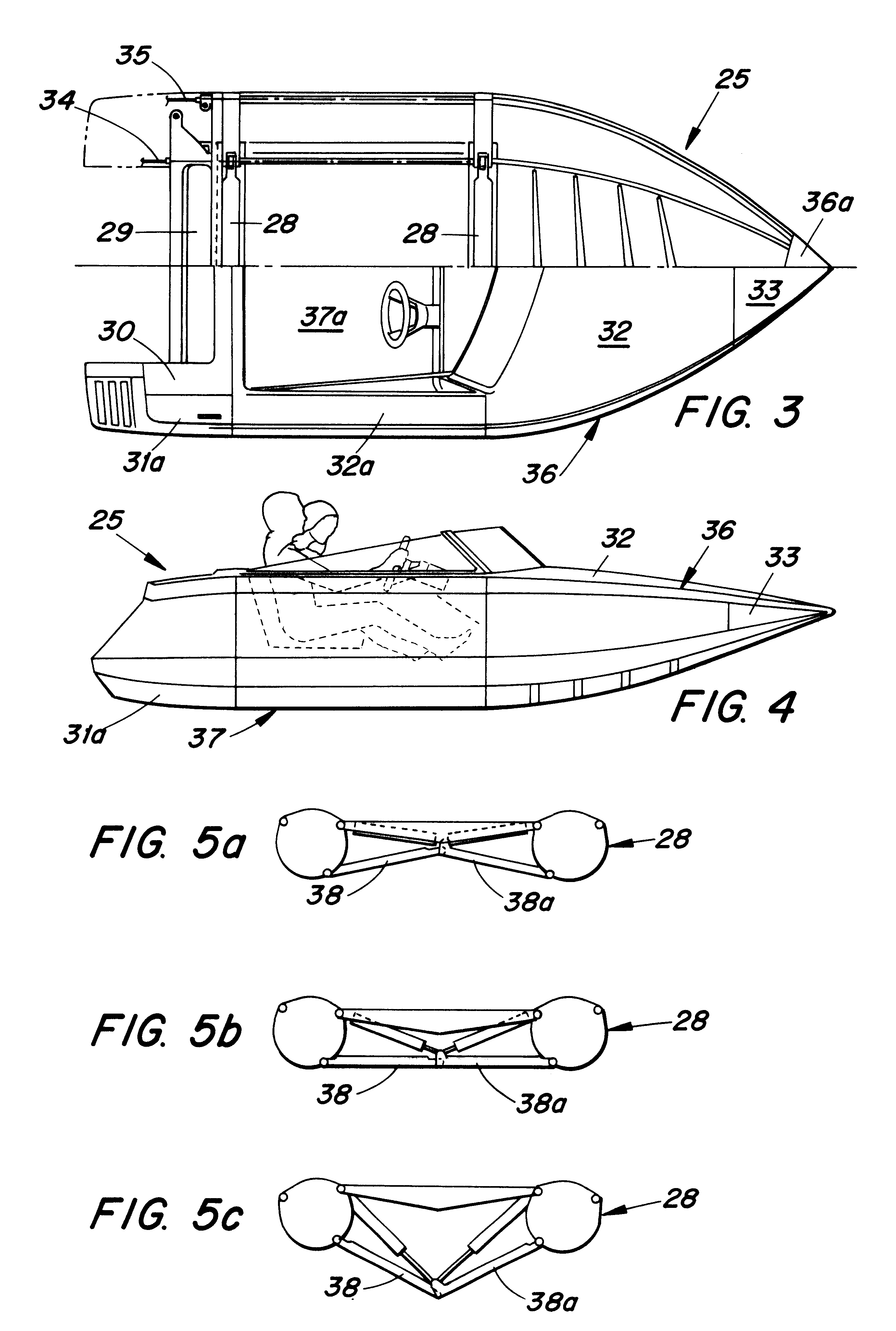Marine vessel
a watercraft and variable hull technology, applied in the direction of rafts, vessel auxiliaries, vessel construction, etc., can solve the problem that the prior art does not show how movable parts of the boat structure may be used to capture and conver
- Summary
- Abstract
- Description
- Claims
- Application Information
AI Technical Summary
Benefits of technology
Problems solved by technology
Method used
Image
Examples
Embodiment Construction
The superstructure of the marine vessel of the invention forms the hull shape, and works on the same principle as an airframe does in an aircraft. The vessel's interconnecting rods and bulkheads fit together to form a complete boat frame to which either an inflatable or rigid skin may be attached. It thus has all the advantages of both the inflatable and rigid hull boats without the possible disadvantages of either one. The structure used in an inflatable hull is the same boat frame used in a rigid hull design. It provides for both the modularity and the variable hull along with another unique aspect for the inflatable version. For if all of the air is removed from every chamber in the vessel, the boat will still function inflation is only needed for maximum performance not flotation. So the vessel overcomes the greatest disadvantage of inflatable boats by eliminating the dangers associated with hull punctures.
In one embodiment, the method for moving the variable hull of the inventi...
PUM
 Login to View More
Login to View More Abstract
Description
Claims
Application Information
 Login to View More
Login to View More - R&D
- Intellectual Property
- Life Sciences
- Materials
- Tech Scout
- Unparalleled Data Quality
- Higher Quality Content
- 60% Fewer Hallucinations
Browse by: Latest US Patents, China's latest patents, Technical Efficacy Thesaurus, Application Domain, Technology Topic, Popular Technical Reports.
© 2025 PatSnap. All rights reserved.Legal|Privacy policy|Modern Slavery Act Transparency Statement|Sitemap|About US| Contact US: help@patsnap.com



